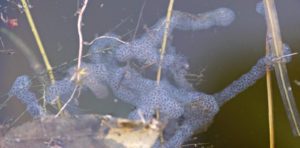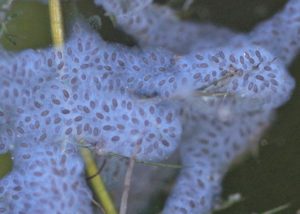Greetings, BugFans,
The BugLady finds this wonderful dragonfly cruising tirelessly over cattails at the edges of lakes or patrolling long stretches of the Milwaukee River about six feet above the surface. She takes a lot of Hail Mary shots, and this is the best she’s done (so far).
Like their smaller cousins (Beaverpond, Spiny, and Common Baskettails), Prince Baskettails are in the Emerald family Corduliidae and the genus Epitheca (from the Greek “epi “above, upon” and theca “pouch, basket, receptacle.” Unlike other odonates, which oviposit by inserting an egg into a slit they cut in vegetation or by tapping the water with their abdomen to release the eggs within, baskettails large and small fly around with a clump of eggs at the tip of their abdomen. These they drop into the water, either all at once, or by flying inches above the surface, dragging and snagging the egg mass on aquatic vegetation. The glob of eggs reacts like those kids’ toys that instruct “Just add water;” the strand swells and uncoils, and it may reach 20” long and enclose as many as 1,000 eggs.
While the other baskettails measure about 2” or less, the Prince Baskettail (Epitheca princeps) is 2 ¼” to 3 ¼” long (darner-sized) – the largest baskettail and the largest member of its family. It’s slim-bodied, with three dark spots on each wing (some, especially in the South, are larger and spottier https://bugguide.net/node/view/1351143/bgimage https://bugguide.net/node/view/1078959/bgimage). Mature males have the bright green eyes that are characteristic of their family https://bugguide.net/node/view/398259/bgimage. The only dragonfly you might confuse it with is the female Twelve-spotted Skimmer, which is shorter and has a heavier body and a pale line running along each side of its abdomen https://bugguide.net/node/view/1959162/bgimage.
Adults prey on small, flying insects, often hunting for mayflies high above the trees, and they may form feeding swarms at the end of the day. Though they are large and feisty, they are not quite at the top of the food chain – here’s a Dragonhunter with a Prince Baskettail https://www.uwgb.edu/biodiversity/econotes/2007/dragonhunter.htm. The large https://bugguide.net/node/view/935963/bgimage and spiny naiads (immatures) nab underwater critters with their extendable mouthparts.
Male Prince Baskettails patrol a large territory, as do some females when they’re looking for a place to oviposit. Naiads hatch in a few weeks, using a hard bump on their heads to break out of the egg. They may live in the water for a year or two before emerging, spending their final winter as naiads in deep water where temperatures are more constant. The half-hour that it takes for them to emerge from the water, pull out of their exoskeleton, and lengthen and harden their wings for flight is a dangerous one, and one source said that only 1% of the naiads achieve adulthood.


Here’s a series of pictures of a Prince Baskettail emerging – https://bugguide.net/node/view/457838/bgimage and a picture of the exuvia (shed skin) https://bugguide.net/node/view/1442425/bgimage.
They rarely perch, and when they do, they hang vertically from a twig, and they often curve their abdomen https://bugguide.net/node/view/1675349/bgimage). The BugLady has never seen a perched Prince Baskettail (unless, of course, she glanced at one and dismissed it as a Twelve-spotted Skimmer), but she read that they are more likely to be perched on cloudy days.
On another topic completely, the BugLady is offering this without comment. There is a similar movement in the bird world https://www.smithsonianmag.com/smart-news/these-moths-will-be-renamed-stop-use-ethnic-slur-180978151/?utm_source=smithsoniandaily&utm_medium=email&utm_campaign=20210712-daily-responsive&spMailingID=45289685&spUserID=ODg4Mzc3MzY0MTUyS0&spJobID=2043035771&spReportId=MjA0MzAzNTc3MQS2. Who says we don’t do cutting-edge entomology here!
Kate Redmond, The BugLady
Bug of the Week archives:
http://uwm.edu/field-station/category/bug-of-the-week/
